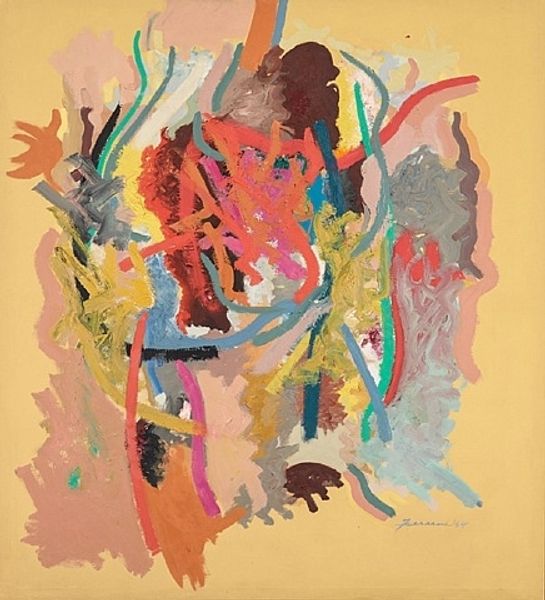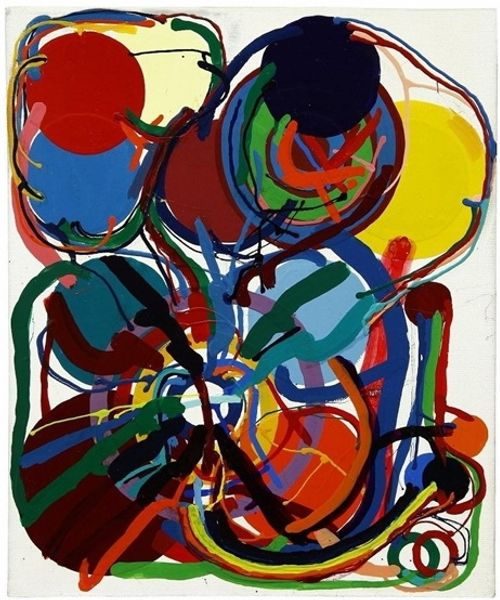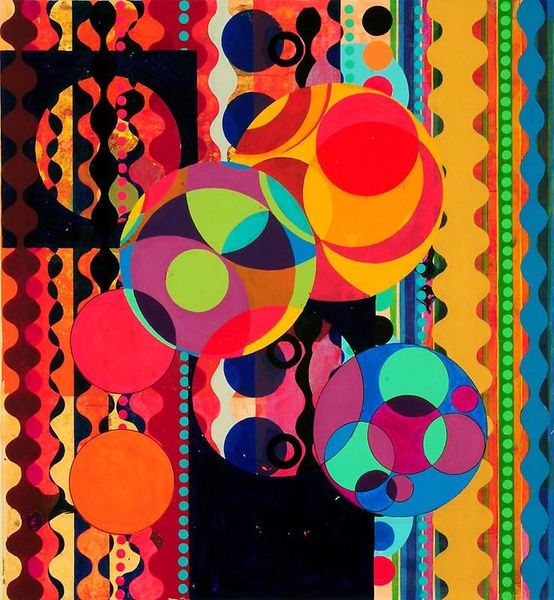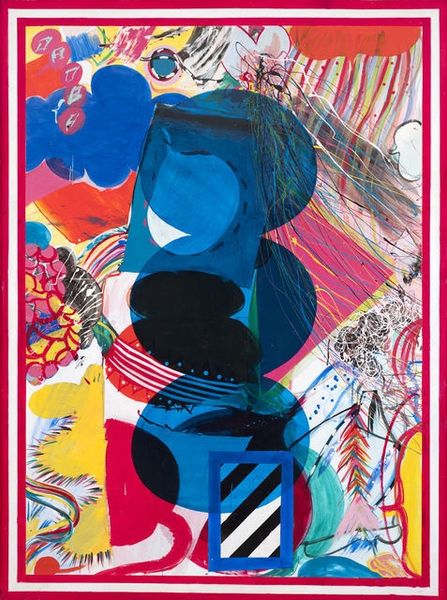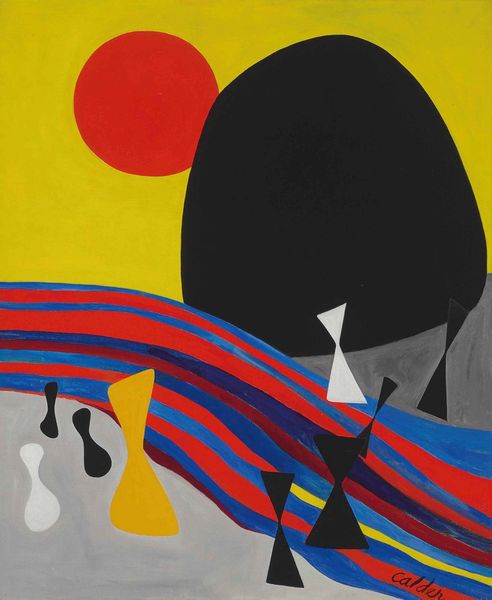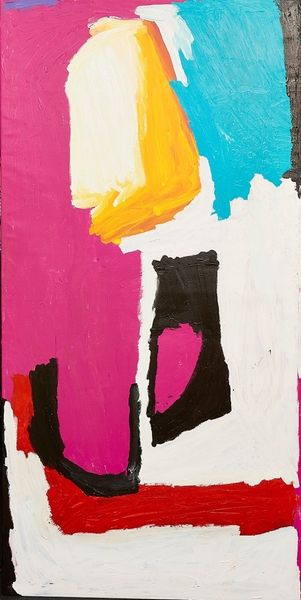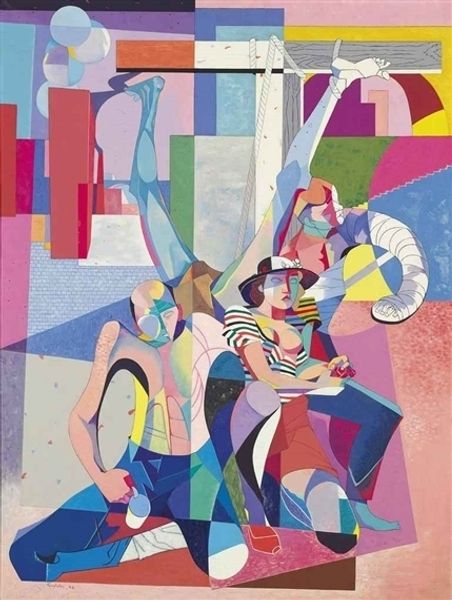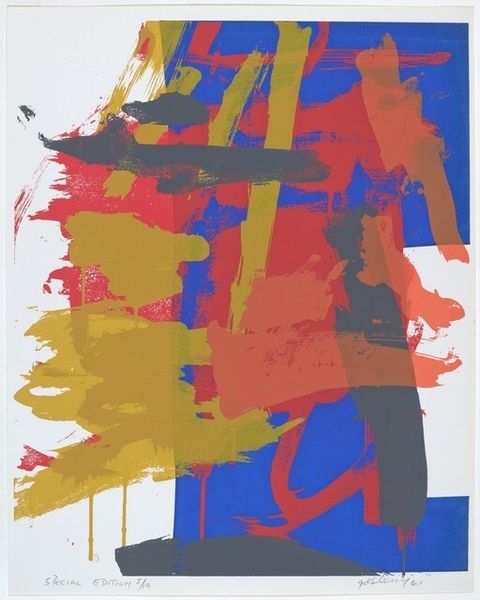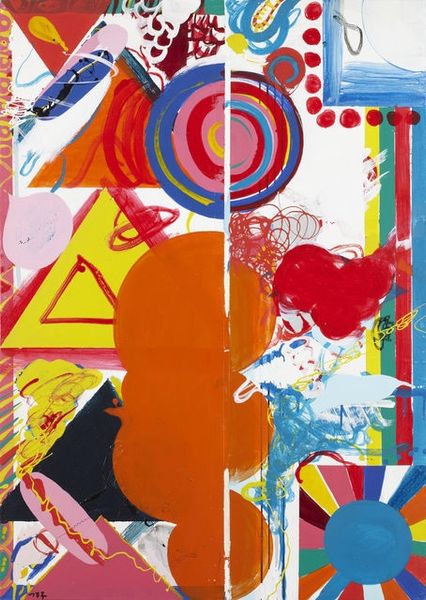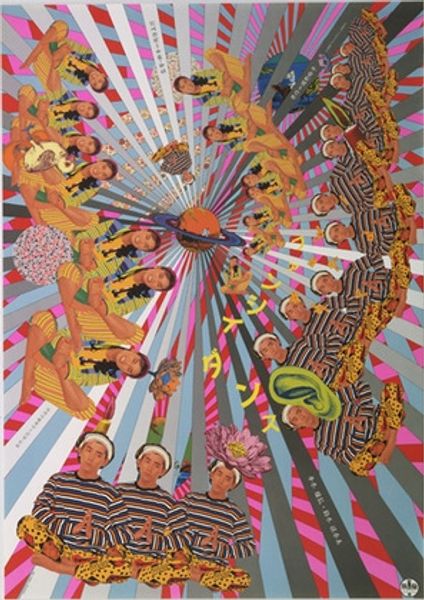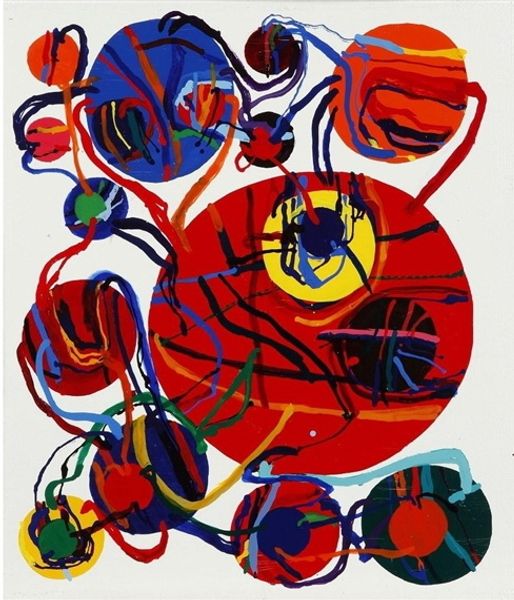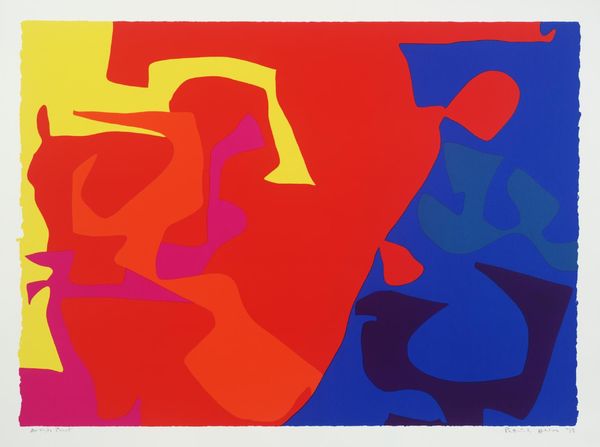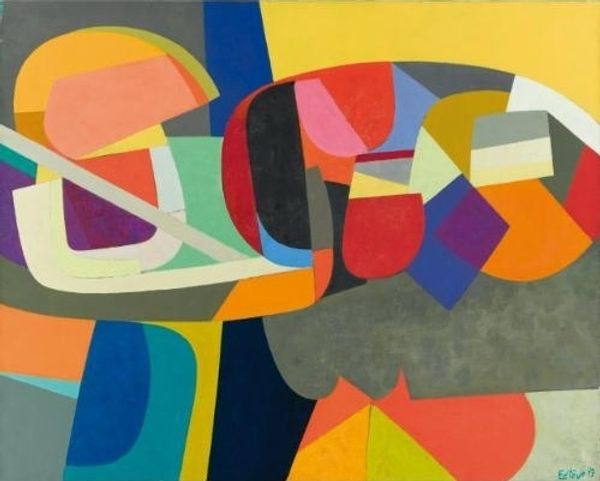
Copyright: Tsuruko Yamazaki,Fair Use
Editor: We're looking at Tsuruko Yamazaki's Untitled from 1963, created with acrylic paint. It's bursting with vibrant colors and bold shapes. What strikes me most is how playful it feels, almost childlike, but also quite dynamic. What do you see in this piece, particularly considering the artistic landscape of the early 60s? Curator: I'm immediately drawn to the materials, specifically the acrylic. It allowed Yamazaki to achieve these incredibly bright, almost artificial hues, a stark contrast to the more muted tones often associated with traditional oil painting. Considering its introduction to Japan around the mid-1950s, and Yamazaki's connection to the Gutai Art Association, how does the embrace of this synthetic medium potentially reflect a postwar cultural shift in Japan toward consumerism and industrial production? Is she perhaps commenting on the changing landscape of art production itself? Editor: That's a fascinating point. So, the very material, acrylic, becomes a statement? How does this connect to the pop-art associations I see here? Curator: Exactly. The use of a relatively new, manufactured substance challenges conventional divisions between high art and industrial design, echoing the strategies employed by Pop artists in America and Europe. But there's also a distinction: Pop Art often satirized mass production. I wonder if Yamazaki's embrace of these materials has a different, perhaps more optimistic, read in the context of a rapidly modernizing Japan. Could it also be that the use of such intense colors represents Fauvist, expressionist and abstract feelings? Editor: I hadn't considered that optimistic angle. It almost makes the painting seem celebratory. Thinking about it now, she might not be questioning mass production but celebrating what these new materials offered artists. It changes the tone entirely. Curator: Precisely! By analyzing the materials and the social context in which Yamazaki was working, we move beyond formal analysis and consider art as a product and a reflection of its time. The painting becomes a lens through which to understand shifts in the means of art production. Editor: That connection of art and broader societal shifts is definitely insightful.
Comments
No comments
Be the first to comment and join the conversation on the ultimate creative platform.
